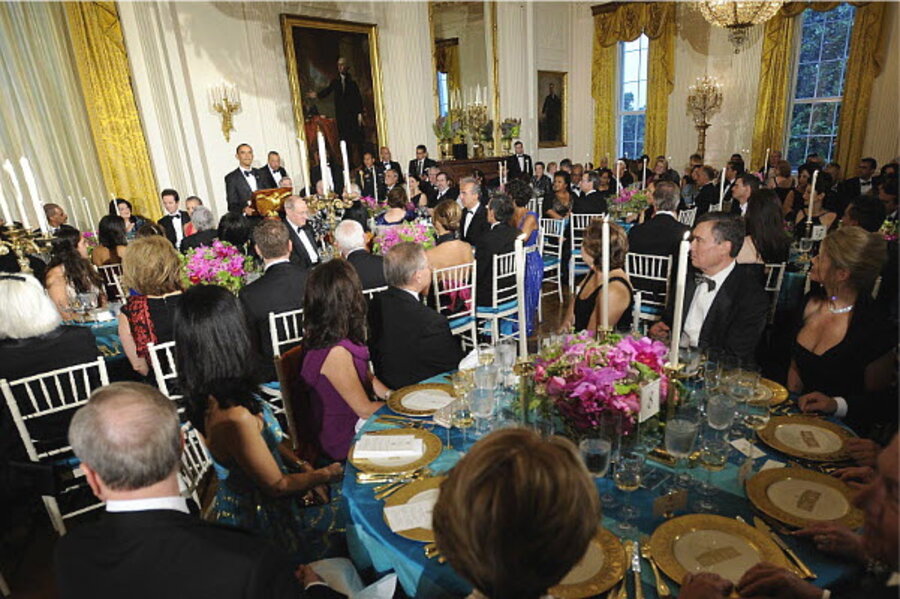Are state dinners going the way of the dodo under Obama?
| Washington
When Brazilian President Dilma Rousseff declined President Obama’s invitation and canceled a state visit intended for later this month, the hole left in the White House calendar was quickly filled.
Out was a highly choreographed affair set to culminate in a glittery state dinner with an impressive invitation list, a lengthy menu, and pricey entertainment.
In, for the newly blank Oct. 23 slot, was an all-business visit by Pakistani Prime Minister Nawaz Sharif.
One could almost hear the sigh of relief emanating from the White House – not so much over the substitution of leaders (Brazil is currently furious with the United States over the reports of NSA spying, but Pakistan’s long-prickly relations with the US are not exactly a walk in the park, either), but because of Mr. Obama’s apparent lack of enthusiasm for the time-honored state dinner.
Indeed, with cancellation of the Rousseff visit, the Obama White House will almost certainly hold no state dinner this year – prompting some in Washington to pronounce the state dinner, if not on its way to extinction, at least a candidate for the endangered species list.
Since moving into the White House in 2009, Obama has hosted six state dinners. That’s a far cry from the 35 that Ronald and Nancy Reagan put on in their eight years at 1600 Pennsylvania Avenue.
Reasons for the state dinner’s demise range from cost to presidential preference. Some even see as a factor a rise in practicality and pragmatism among the world’s growing number of democratically elected leaders, while others say America’s decline as the world’s undisputed superpower also figures in.
Ms. Rousseff’s snub of a White House state dinner may be unprecedented (Saudi Arabia’s King Saud canceled a 1957 state visit until President Eisenhower relented and moved his greeting of the monarch from the White House to the airport, as the king wished). Some of the factors dooming the state dinner are at work in the Brazilian no-show, some say.
“The visit was important, but it was ceremonial,” former Brazilian ambassador to the US, Rubens Barbosa, told an audience at Washington’s Inter-American Dialogue recently. “After the state visit, Brazil would remain in the same place.”
Rousseff, who was already on thin ice with Brazilians after major demonstrations by the country’s middle class earlier this year, was in no position to disregard public outrage over the revelations of NSA spying on Brazilian officials and government offices.
Cost is another factor in the state dinner’s demise.
Last year California Rep. Darrell Issa (R), chairman of the House Oversight and Government Reform Committee, berated the White House for what he called “excessively lavish events.” Citing reports that a 2010 state dinner for Mexico’s then-president, Felipe Calderón, cost almost $1 million – or about $4,700 per gowned or tuxedoed guest – Representative Issa said that even as average Americans were “reining in their spending wherever possible,” the White House was doing “the opposite.”
OK, so maybe the stage built specially for Beyoncé to entertain the Calderóns and guests was a bit over the top.
Yet despite such criticisms of the Obama White House, the president – who isn’t known for his socializing with world leaders – has a reputation for bridling at the formality and luxe that are part of the state dinner.
Obama even tried to make the excesses of state visits the brunt of a joke he delivered at the Calderón dinner, which took place on the heels of a notorious General Services Administration employees’ conference in Las Vegas that cost more than $800,000 and featured clowns and pricey team-building cooking classes.
“We’ve got men in tuxes, women in gowns, fine wine, first-class entertainment,” Obama told his bejeweled audience. “I was just relieved to learn this was not a GSA conference.”






